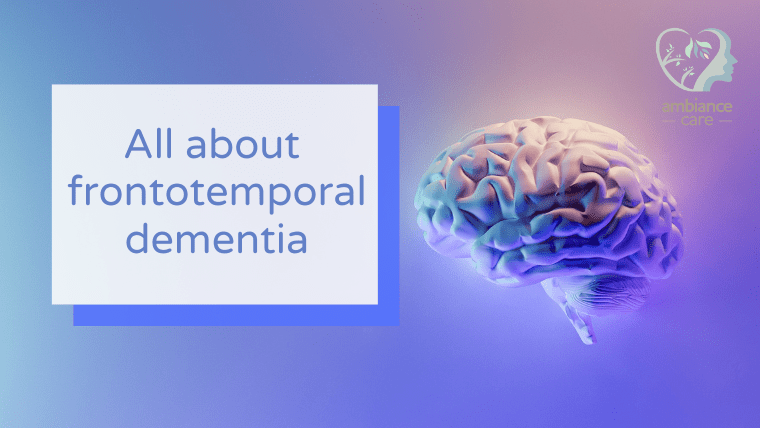What is frontotemporal dementia?

There are dozens of different types of dementia but some are more commonly known, because they affect more people. Frontotemporal dementia is less prevalent than other types of dementia, like Alzheimer’s, but it’s recently come into the spotlight after a celebrity diagnosis.
World-famous actor Bruce Willis was recently diagnosed with frontotemporal dementia, which is bringing the condition out into the open. The 67-year-old was originally diagnosed with aphasia – difficulties with language or speech usually caused by damage to the left side of the brain – but his family recently revealed that he has since received a more specific diagnosis.
His former wife Demi Moore made the announcement on social media:
Since we announced Bruce’s diagnosis of aphasia in spring 2022, Bruce’s condition has progressed and we now have a more specific diagnosis: frontotemporal dementia (known as FTD). Unfortunately, challenges with communication are just one symptom of the disease Bruce faces. While this is painful, it is a relief to finally have a clear diagnosis.
What is frontotemporal dementia?
So, what is frontotemporal dementia? Well, it’s a type of dementia that affects the front and sides of the brain – the frontal and temporal lobes, hence the name.
In cases of frontotemporal dementia, nerve cells in these areas are lost, which can affect behaviour, language, personality and movement.
There are two more common sub-types of the disease: front variant and primary progressive aphasia. The former affects behaviour and personality and the latter affects communication. A less common variant affects movement.
Frontotemporal dementia was previously known as Pick’s disease, named after the physician Arnold Pick who first described the symptoms in a patient in 1892.
What causes frontotemporal dementia?
Frontotemporal dementia is caused by abnormal proteins forming inside brain cells in the frontal and temporal regions, which are responsible for language, behaviour, planning and organisation. These proteins are believed to damage the cells, preventing them from working properly.
There may be a genetic link – the NHS says that around one in eight people diagnosed with frontotemporal dementia will have relatives who were also affected.
What are the symptoms of frontotemporal dementia?
Symptoms can include:
- Speaking slowly or saying words in the wrong order
- Acting inappropriately or impulsively
- Getting distracted easily
- Struggling with planning or organisation
- Problems with memory
- Neglecting personal hygiene
How common is frontotemporal dementia?
In the UK, at least 16,000 of the 850,000 people living with dementia have frontotemporal dementia, making it one of the rarer forms of the disease.
The Willis Family says:
FTD is a cruel disease that many of us have never heard of and can strike anyone. For people under 60, FTD is the most common form of dementia, and because getting the diagnosis can take years, FTD is likely much more prevalent than we know.
What’s the prognosis for frontotemporal dementia?
There are no treatments for frontotemporal dementia and like other types of dementia, the condition is progressive – usually over eight to 10 years.
Medication may be prescribed to control behavioural issues, and therapies and activities can be used to manage symptoms.
Physiotherapy, speech and language therapy and occupational therapy can help with communication and everyday tasks, while support groups and memory cafes can be great places to enjoy social connection and activities.
We’re sure Bruce’s family and friends will rally round him to ensure he is still able to live his best life as they navigate the dementia journey together. For dementia support closer to home in Stockport, East Cheshire, South Manchester or Trafford, contact our team any time on 0161 537 0983 or at enquiries@ambiancecare.co.uk.


